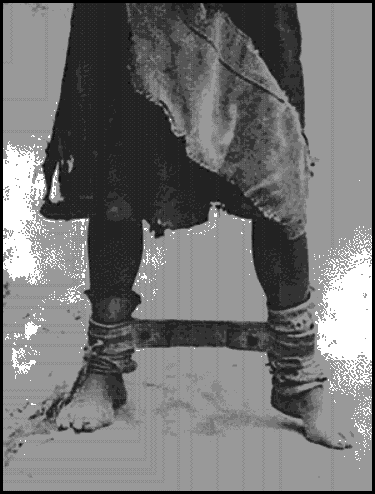
The End of Slavery

When I imagine the profound social transformation necessary to avoid calamity, I think about Robinson Crusoe, hero of Daniel Defoe's famous novel. Defoe clearly intended his hero to be an exemplary man. Shipwrecked on an uninhabited island off Venezuela in 1659, Crusoe is an impressive example of behavioral plasticity. During his twenty-seven-year exile he learns to catch fish, hunt rabbits and turtles, tame and pasture island goats, prune and support local citrus trees, and create "plantations" of barley and rice from seeds that he salvaged from the wreck. (Defoe apparently didn't know that citrus and goats were not native to the Americas and thus Crusoe probably wouldn't have found them there.) Rescue comes at last in the form of a shipful of ragged mutineers, who plan to maroon their captain on the supposedly empty island. Crusoe helps the captain recapture his ship and offers the defeated mutineers a choice: trial in England or permanent banishment to the island. All choose the latter. Crusoe has harnessed so much of the island's productive power to human use that even a gaggle of inept seamen can survive there in comfort.To get Crusoe on his unlucky voyage, Defoe made him an officer on a slave ship, transporting captured Africans to South America. Today, no writer would make a slave seller the admirable hero of a novel. But in 1720, when Defoe published Robinson Crusoe, no readers said boo about Crusoe's occupation, because slavery was the norm from one end of the world to another. Rules and names differed from place to place, but coerced labor was everywhere, building roads, serving aristocrats, and fighting wars. Slaves teemed in the Ottoman Empire, Mughal India, and Ming China. Unfree hands were less common in continental Europe, but Portugal, Spain, France, England, and the Netherlands happily exploited slaves by the million in their American colonies. Few protests were heard; slavery had been part of the fabric of life since the code of Hammurabi. Then, in the space of a few decades in the nineteenth century, slavery, one of humankind's most enduring institutions, almost vanished.
The sheer implausibility of this change is staggering. In 1860, slaves were, collectively, the single most valuable economic asset in the United States, worth an estimated $3 billion, a vast sum in those days (and about $10 trillion in today's money). Rather than investing in factories like northern entrepreneurs, southern businessmen had sunk their capital into slaves. And from their perspective, correctly so --- masses of enchained men and women had made the region politically powerful, and gave social status to an entire class of poor whites. Slavery was the foundation of the social order. It was, thundered John C. Calhoun, a former senator, secretary of state, and vice president, "instead of an evil, a good --- a positive good." Yet just a few years after Calhoun spoke, part of the United States set out to destroy this institution, wrecking much of the national economy and killing half a million citizens along the way.
Incredibly, the turn against slavery was as universal as slavery itself. Great Britain, the world's biggest human trafficker, closed down its slave operations in 1808, though they were among the nation's most profitable industries. The Netherlands, France, Spain, and Portugal soon followed. Like stars winking out at the approach of dawn, cultures across the globe removed themselves from the previously universal exchange of human cargo. Slavery still exists here and there, but in no society anywhere is it formally accepted as part of the social fabric.
Historians have provided many reasons for this extraordinary transition. But one of the most important is that abolitionists had convinced huge numbers of ordinary people around the world that slavery was a moral disaster. An institution fundamental to human society for millennia was swiftly dismantled by ideas and a call to action, loudly repeated.
--- From "State of the Species"
Charles C. Mann
As found in The Best American
Magazine Writing --- 2013
James Bennet, Editor
© 2013 Columbia University Press